#post-minimalism
Text
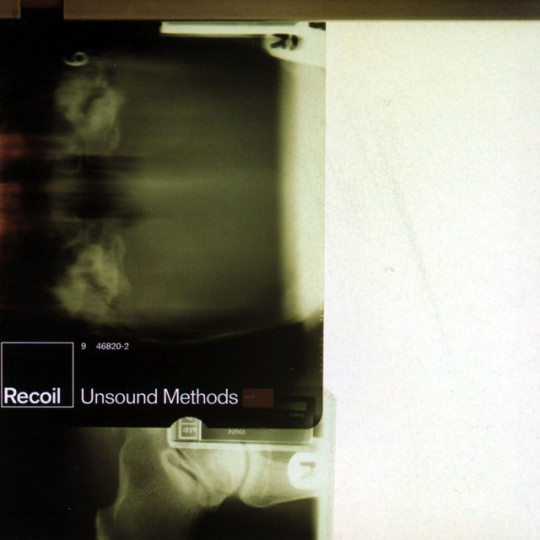
#Electronic#Trip Hop#Spoken Word#Downtempo#Post-Minimalism#Progressive Electronic#1990s#2000s#UK#poll
65 notes
·
View notes
Text

Tracklist:
Tubular Bells (Part One) • Tubular Bells (Part Two)
Spotify ♪ YouTube
#hyltta-polls#polls#artist: mike oldfield#language: instrumental#language: english#decade: 1970s#Progressive Rock#Symphonic Prog#Post-Minimalism#New Age#Post-Rock#they're 30 minute tracks
55 notes
·
View notes
Text
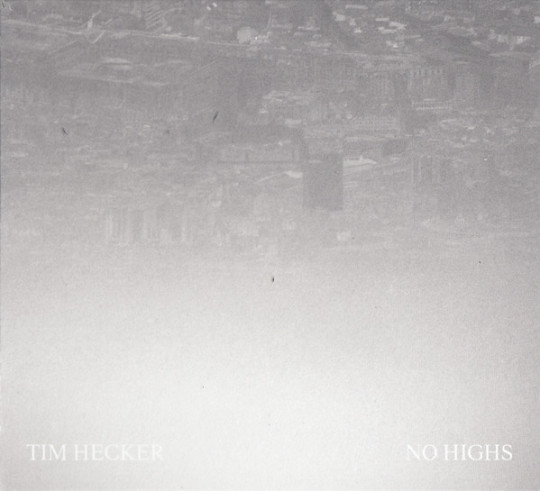

Tim Hecker - Monotony
from:
Tim Hecker - No Highs (Kranky, 2023)
#2020s#Tim Hecker#Electronic#Ambient#Drone#Electroacoustic#Post-Minimalism#Progressive Electronic#cinematic#Kranky#2023#week 46 2023#Bandcamp
25 notes
·
View notes
Photo

Kali Malone - Living Torch
(Drone, Electroacoustic, Dark Ambient)
Trading her traditional pipe organ compositions for drone pieces stitched together with trombone, bass clarinet, and ARP 2500, Living Torch glows like Kali Malone's music never has before. These two vibrant, charged ambient pieces explore the rich textures and harmonics of just intonation and make for a milestone in Malone's repertoire.
☆☆☆☆☆
Though best known for her radiant pipe organ compositions, Kali Malone's music is best described in emotional terms rather than their pure structure. Her pieces are dark and lustrous, mysterious sculptures that tower over you and leave you drenched in shadow, songs that sound more like forces of nature than plain old pieces of music, and Living Torch is the perfect embodiment of that. While Malone's pipe organ work is cerebral and invigorating with her intricate harmonies and delicate progressions, Living Torch trades that for a dark duo of trombone and bass clarinet played by Mats Äleklint and Isak Hedtjärn respectively, instruments with golden lower tones and sensitive higher ranges that blend around Malone's blends of pipe organ, ARP 2500, and modular synth like dark red paint swirled into a murky black canvas. It feels at once meditative and like the end of the world, the sky splitting open through Malone's engrossing drones while you fall into a trance watching it all unfold, Living Torch one of the most captivating electroacoustic albums in recent memory as she meticulously pieces the album's two halves together through stitching individual recordings of Äleklint and Hedtjärn into them as they recorded each each sound one by one, matching their pitch to a sawtooth wave tuned to 11-odd limit just intonation - where each pitch has a ratio that is a multiple of 11. Through that complicated recording process, the three of them create something truly reverent that shudders and breathes at its own whim as Malone shapes its nervous system and muscle tissue across Living Torch's 33 minutes.
While the technical side of Malone's knotty, just intonation framework isn't all too important to the listening experience of Living Torch, it makes it easy to understand why it has such a rapturous and looming presence. While it's a bit complicated to explain, here's the gist of things: by tuning an instrument and its pitches as whole number ratios (3/2, 9/8, 5/4), the intervals between the numbers all come from tones in a harmonic series that all connect back to the starting note (the fundamental), creating just intonation. With the 11-odd limit just intonation Malone uses here, those intervals all have to be rational numbers that divide either the numerator or denominator without being larger than 11, meaning that there are six different numbers that can be used to create those ratios. Compared to the usual twelve-tone scales used in most modern Western music, largely using either the Pythagorean or five-limit tunings, the 11-odd limit that Malone uses on Living Torch gives the music a much wider range of tones to play with, Äleklint and Hedtjärn's instruments giving a vast expanse to groan and rumble and hum atop brooding synthesizer chords, a sound that feels unfamiliar yet perfectly in line with the mystic atmospheres of drone. Living Torch is a gloomy album, one that puts emphasis on low-end fuzz rather than serene layers of bright brass and woodwind, but the extra level of depth Malone's compositional detour gives to things makes it feel both despairing and elegant at once, a musical revelation unearthed from the aftermath of a forest fire. No other album gives me the goosebumps and captivation that Living Torch does, because nobody else is going for this wild a sound and making it work so well.
Split into two different sides, the different halves of Living Torch aren't separated by their sound as much as by their intensity. Living Torch I is much softer, more covert, opening with Malone's traditional pipe organ swells before quickly trading them in for Äleklint's rumbling trombone and hushed drones from Hedtjärn, laying the foundation of the album's sound while keeping everything careful and minimalist. It's also the longer side of Living Torch at eighteen and a half minutes, but by giving this lighter half of the album more space, Malone not only helps you sink into her liberated timbral palette, but getting to stretch and bend the shape of the piece as it goes on: the twilit first nine of so minutes enveloping into a dewy second half where more space is given to Hedtjärn's misty bass clarinet and soft splashes of trombone, Malone's ARP 2500 and pulsing pipe organ painting the background rather than taking center stage. The second half, though, is clearly the superior one (though the first half is still nothing short of fantastic), Malone taking things to the max as she seeks to get the absolute most that she can out of Living Torch. While it may start quite relaxed similar to Living Torch I, the song quickly takes a turn into the mouth of a Leviathan, Malone layering distortion and noise onto the 2500 until it can't take any more of it, shuddering and shaking from the impact of its own roar. Äleklint and Hedtjärn are still present within the music, but as they continue to layer down the same tones that they have been for the rest of the album, it begins to feel like they're slowly being pulled away from you, Malone's massive synthesizers shooting you into the stratosphere and leaving them nothing more than a dot on the Earth. Despite its long length, it's one of the most cathartic songs I've heard this entire year, Malone pulling so much power and emotional force from her synthesizers that the fifteen minute length makes for an utterly sublime listen. Living Torch is a brief album, but as a singular experience it is simply unparalleled.
There's one moment around the end of Living Torch II that stuck with me more than anything else here. About 12 minutes in, Malone lets those massive ARP 2500 drones from before slowly die down as the piece comes to a close, and in the aftermath of them, the low end of the music begins to rumble like the aftershock of a 9.2 magnitude earthquake. It sounds like you're standing directly under a windmill spinning so fast that the blades are about to fly off, Äleklint's trombone and Hedtjärn's bass clarinet the only things you can hold onto as Malone lets Living Torch II come to an end. It's that kind of natural movement, how the sounds an instrument makes shifts the air around it long after the note has stopped being played, that makes Living Torch II such a milestone in Malone's discography. Her pipe organ work and time spent in bands like the shoegazey Swap Babies or the folksy Taxi Taxi have previously shown off her raw compositional strengths, but never before has she reached for something so singular and cosmic, let alone pull it off this perfectly. These songs grow like an alien egg inside a containment chamber, beautiful yet strange and unwieldy, Malone giving it new stimuli through her synthesizers and brass and woodwind to see just how far she can take things. I'm not sure I'll find anything even close to how magnificent and enchanting Living Torch is, but I don't want to either. When Kali Malone has been able to make Living Torch such a powerful, outstanding achievement for herself and modern drone music, there's no way things could be any better than this.
#kali malone#living torch#portraits grm#ambient#dark ambient#drone#electoacoustic#experimental#microtonal#microtonal classical#minimalism#modern classical#post-minimalism#2022#10/10#classical
11 notes
·
View notes
Audio
#music discovery#music#spotify link#spotify#music artists#david lang#Ars Nova Copenhagen#theatre of voices#Paul Hillier#song#i lie#genres#choral#21st century classical#american 21st century classical#post-minimalism#post minimalism#chamber choir#Bourgeoiz Music Discovery#MORE MUSIC ON MY BLOG#from me
6 notes
·
View notes
Text
Avant-cuvée 2024 : 1/10
Les trois premières cuvées se sont construites à l'abri des regards, révélées en un seul bloc une fois toutes les explorations sonores de l'année menées à leur terme. Changement de rythme en 2024 : à compter de mars et jusqu'en décembre inclus, toutes les fins de mois seront ponctuées par une sélection de six coups de cœur musicaux - préfigurant de manière progressive une grosse moitié de la cuvée annuelle de 100 disques.
Ces avant-cuvées seront l'occasion de célébrer sans trop attendre les œuvres les plus marquantes de l'actualité musicale, tout en se laissant un temps suffisant de décantation (ce que ne permettrait pas un traitement éditorial plus dense). Leur modalité de présentation adopte l'ordre alphabétique du groupe ou de l'artiste, sans aucune sorte de hiérarchisation.
Four Tet | Three

🏴 Angleterre | Text | 45 minutes | 8 morceaux
Kieran Hebden est un des artistes les plus créatifs et talentueux de la scène électronique depuis maintenant plus de vingt ans, et ce douzième album sous l’alias Four Tet est une démonstration éclatante de maitrise et de vision. On y retrouve cet équilibre caractéristique entre ambiances oniriques, virées psychédéliques, grooves inspirés du hip-hop, profondeur hypnotique de la house, le tout dans un breuvage sonore organique d’une fluidité exemplaire (mais cependant parsemé de surprises). Il s’agit de son disque le plus envoutant depuis le sublime There Is Love in You (2010), digne de former avec ce dernier et avec le fondamental Rounds (2003) la trinité de référence de sa riche discographie.
🎧 Daydream Repeat
Amaro Freitas | Y'Y

🇧🇷 Brésil | Psychic Hotline | 43 minutes | 9 morceaux
Trois années ou presque se sont écoulées depuis le réjouissant Sankofa, et le moins que l’on puisse dire c’est qu’Amaro Freitas a parcouru du chemin sur cet intervalle de temps. 4 600 kilomètres plus exactement, distance séparant son Pernambouc natal du voisinage forestier de la mythique localité amazonienne de Manaus. En immersion profonde au sein de la communauté indigène des Sateré-Mawé, reconnue pour la vitalité de ses pratiques culturelles, pour la sacralité extrême de ses liens avec la nature mais aussi pour la dureté de ses rites initiatiques (coucou les fourmis tucandeira, dites « balles de fusil ») , le pianiste virtuose semble avoir accédé à de nouveaux états de conscience et c’est par sa musique qu’il parvient à nous y entrainer à sa suite. Aussi foisonnant que méditatif, son quatrième album a fait basculer son jazz dans une nouvelle dimension third stream, plus complexe mais aussi plus saisissante.
🎧 Encantados
Julia Holter | Something in the Room She Moves

🇺🇸 Etats-Unis | Domino | 54 minutes | 10 morceaux
Julia Holter a illuminé la décennie musicale 2010s par son inventivité et son exigence artistique hors du commun, trouvant une sublime ligne de crète entre composition savante et expressivité élégante. Elle a aussi impressionné par sa prolificité, enchainant cinq disques importants en l’espace de huit années. Le dernier d’entre eux, Aviary (2018), album somme d’une heure et demie, peut être vu rétrospectivement comme la conclusion d’un cycle de créativité bouillonnante comme très peu d’artistes ont pu en traverser toutes époques confondues. Six ans, une pandémie mondiale et une maternité plus tard, Something in the Room She Moves ouvre un nouveau chapitre dans le parcours de la californienne. Sa cérébralité légendaire y est un peu moins prégnante, au profit d’une connexion plus profonde au corps et à ses bouleversements internes – comme dans un mouvement de lâcher-prise créatif puissamment libérateur que les épreuves traversées (dont la panne d’inspiration) auraient patiemment préparé. Fusionnant jazz, folk, prog et néoclassique dans un ensemble sonore océanique et organique de toute beauté, ce retour discographique baigné d’ombres mais surtout de lumières réinstalle Julia Holter au sommet de l’art pop contemporaine.
🎧 Something in the Room She Moves
Vijay Iyer Trio | Compassion

🇺🇸 Etats-Unis | ECM | 65 minutes | 12 morceaux
Vijay Iyer est un des pianistes les plus talentueux du jazz américain contemporain, avec un jeu vibrant et des compositions intellectuellement stimulantes qui explorent les frontières entre les chapelles musicales. Changeant régulièrement de configuration et de partenaires artistiques, on a pu l’entendre en 2023 arpenter de sublimes territoires orientaux en compagnie d’Arooj Aftab et de Shahzad Ismaily. « Compassion » réactive un précédent trio qui avait déjà fait ses preuves, tant en studio (Uneasy – 2021) qu’en concert, avec la contrebassiste d’origine malaisienne Linda May Han Oh et le percussionniste avant-gardiste Tyshawn Sorey. Comme son nom l’indique, ce second album de la bande est habité par une dimension humaniste très profonde, mêlant la beauté et la résilience dans des paysages sonores magnifiquement aériens et puissamment électrisants.
🎧 Maelstrom
The Smile | Wall of Eyes

🏴 Angleterre | XL Recordings | 45 minutes | 8 morceaux
Wall of Eyes s’inscrit dans le prolongement du premier album du trio, avec une approche peut être plus impressionniste. Ce qui pouvait apparaitre comme une belle parenthèse inspirée en 2022, un side-project particulièrement réussi de Radiohead, prend finalement racine et semble pouvoir s’installer dans la durée comme un projet à part entière. Un très beau disque d’art rock nourri au jazz et au krautock.
🎧 Bending Hectic
Rafael Toral | Spectral Evolution
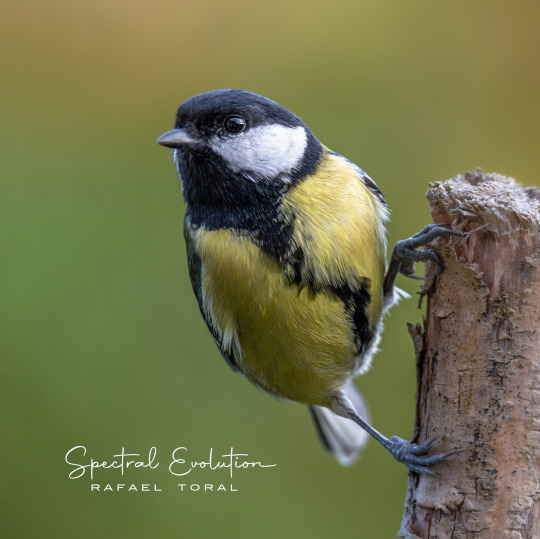
🇵🇹 Portugal | Moikai | 47 minutes | 1 morceau
Riche d’une trentaine d’années d’exploration sonore exigeante (notamment dans le cadre d’un projet au long court intitulé « Space Program »), le compositeur portugais Rafael Toral aligne ici toutes les planètes et délivre une symphonie drone-jazz absolument éblouissante. Créée à partir d’accords de guitare ralentis et à l’aide d’un arsenal de synthétiseurs faits maison, Spectral Evolution est une odyssée étonnamment organique, convoquant tout à la fois la beauté hypnotique et infinie de la nature (symbolisée par le chant des oiseaux) et les possibilités vertigineuses de création offertes par la technologie. C’est une œuvre intensément émouvante, peut être aussi parce qu’elle représente un accomplissement inouï, une sorte de graal sonore d’une limpidité miraculeuse compte tenu de l’ampleur des ambitions artistico-scientifiques poursuivies par Toral sur plusieurs décennies.
🎧 Spectral Evolution
#avant-cuvée 2024#ambient#spiritual jazz#art pop#chamber jazz#post-minimalism#experimental#drone#electronic#post-bop
0 notes
Text
Tara Clerkin Trio (2020), In Spring (2021), On the Turning Ground (2023), Tara Clerkin Trio
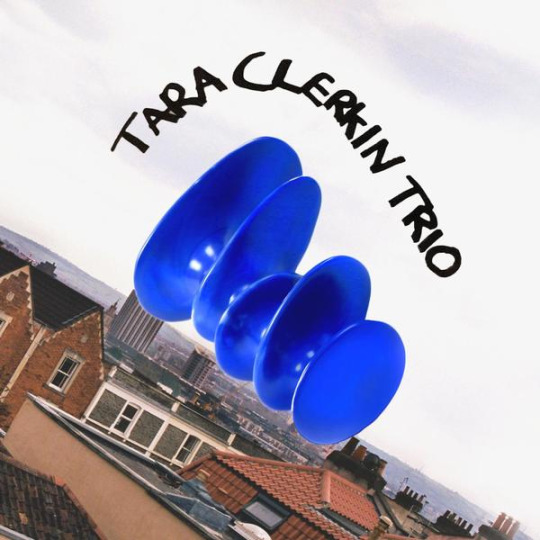

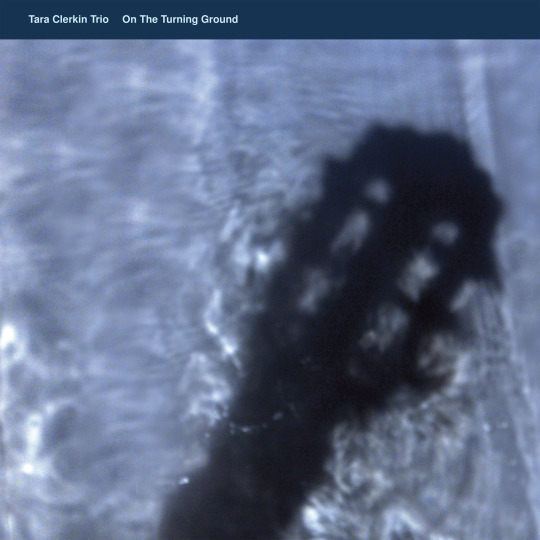
I first encountered Bristol band Tara Clerkin Trio in, of all places, Tokyo. Pulled into an unknown gig in Koenji’s Sub Store by a displaced West Country music journalist, they were a lovely crew, over here thanks to funding from the British Council (or some similar UK cultural body). But I didn’t think too much of it all – so imagine my surprise when, a few months later, they’re the hottest new thing.
If I remember correctly, the live experience of the group’s music is rather similar to their studio work. They’re dextrous and dreamy, weaving in and out of the familiar with pop that entrances with its elements of schooled, looped jazz. Tara Clerkin Trio’s sound is also kind of ambient, I suppose, in how it’s sort of supposed to be paid attention to, and sort of not; plus it’s got a focus on texture one rarely gets in straight art- or jazz-pop.
Do I actually care about any of Tara Clerkin Trio’s music? Honestly, I’m not sure. It’s very reminiscent of Stereolab – not necessarily in its style but in its approach, in its clear, well-displayed and sort of diluted deference to jazz – and that often makes it seem much less innovative. But I’m glad they’re making a name for themselves. Good for them.
Pick(s): ‘What?’, ‘In Spring’, ‘Marble Walls’
#tara clerkin trio#pop#art pop#jazz pop#post-minimalism#ambient pop#self-titled#In Spring#On the Turning Ground#2020#2021#2023#music#review#music review
0 notes
Text
youtube
Orchestra version
youtube
Band version
#john adams#john coolidge adams#american music#classical music#tone poem#symphonic poem#orchestra#minimalism#post-minimalism#concert band#wind band#wind symphony#wind orchestra#wind ensemble#symphonic band#Youtube
1 note
·
View note
Text
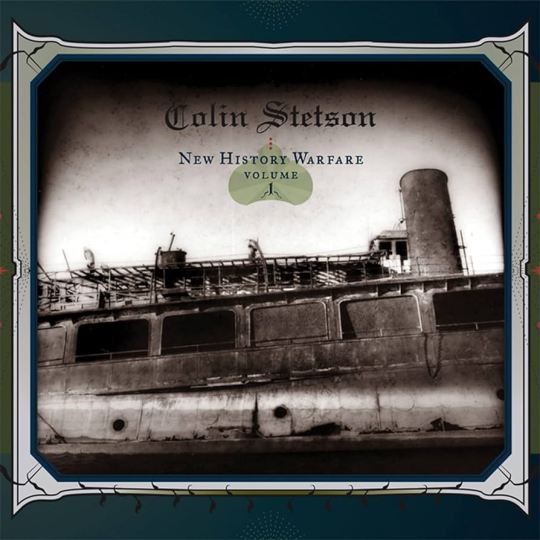
Artista: Colin Stetson
Álbum: New Hiostory Of Warfare, Vol 1
Ano: 2008
Faixas/Tempo: 12/48min
Estilo: Experimental/Post-Minimalism
Data de Execução: 31/10/2023
Nota: 1,5
Melhor Música: As a Bird Or Brance
0 notes
Text
Silvia Tarozzi - Mi specchio e rifletto
Italy, 2020, avant-folk / post-minimalism

View On WordPress
0 notes
Text

charlie
#just a simple redesign#wanted to give charlie a little seasoning. she needs a little smth smth. thought a goat motif would suit her .... because. hell and whateve#shes got cute hooves and big ears#tried to make as minimal changes as possible to stick to her original vibe#this concludes my hazbin posting. thanks for tolerating it#ill have a helluva boss review post in the next couple days when i finish watching it. after that im done#back to your regularly scheduled pony programming#charlie morningstar#hazbin hotel#fanart#my art
3K notes
·
View notes
Text
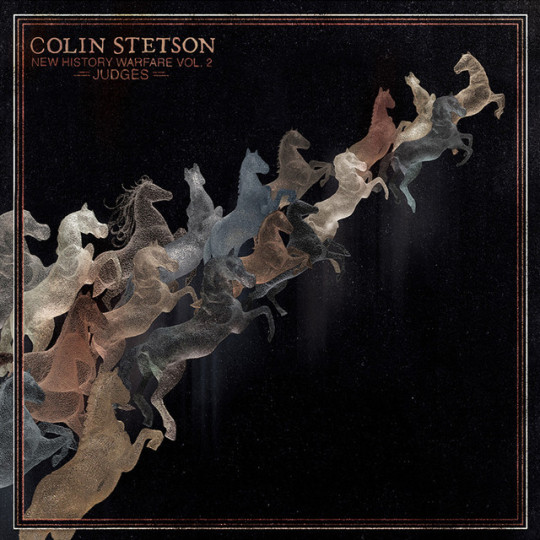
#Post-Minimalism#Experimental#Film Score#Avant-Garde Jazz#Dark Ambient#Modern Classical#2010s#2020s#USA#Canada#poll
74 notes
·
View notes
Text

Tracklist:
From The Air • Big Science • Sweaters • Walking & Falling • Born, Never Asked • O Superman • Example #22 • Let X=X / It Tango
Spotify ♪ Bandcamp ♪ YouTube
#hyltta-polls#polls#artist: laurie anderson#language: english#decade: 1980s#Art Pop#Experimental#Electronic#Spoken Word#Minimal Synth#Post-Minimalism#Poetry#Surreal
31 notes
·
View notes
Audio

Carmen Villain - Light in Phases
from:
Carmen Villain - Sketch for Winter IX- Perlita (Geographic North, 2021)
#2020s#norway#Carmen Villain#electronic#experimental#ambient#fieldrecording#post-minimalism#women in electronic music#Geographic North#2021#week 17-2023
17 notes
·
View notes
Photo

Silvia Tarozzi & Deborah Walker - Canti di guerra, di lavoro e d’amore
(Avant-Folk, Italian Folk Music, Psychedelic Folk)
Silvia Tarozzi and Deborah Walker rework songs from their rural Emilia youth, giving new life to long-lived Italian stories of working class women, protest, political violence, and poor-paying hard work. These avant-garde takes on beloved Mondariso songs take you to the roots of Tarozzi and Walker's music, the deepest they've ever dug into Italian folk music and its deep emotive power.
☆☆☆☆
What's most beautiful about Canti di guerra, di lavoro e d'amore is that it places Silvia Tarozzi and Deborah Walker deeper in their musical history than ever before, those little hints of traditional Italian folk and experimental classical getting pushed out into the sun and soaking in every minute of it. Previously working with one another performing strings on recordings from the likes of Eliane Radigue and Philip Corner, the two of them have proved in the past that they have some incredible chemistry together, Canti di guerra... taking those short collaborative bursts and extending them out across 53 minutes and 12 songs. It's by far one of the most boundary-pushing and emotionally resonant albums this year, these decades-old stories brought back to life through the magic of their strings and a handful of vocalists who join in to help ensure that the words aren't lost to time either.
Possessing pieces both on the extreme and serene sides of the avant-garde, Canti di guerra...'s Italian roots don't mean that Tarozzi and Walker's usual string experimentation is lost in the mix. Opening track Country cloud has sharp violin lines from Tarozzi that spit and stutter like a sprinkler half-broken, her incredible bowing technique shooting out what seems like a thousand notes a second and making for an introduction to Canti di guerra... that's somehow able to be both enchanting and a bit frightening. Other times, they'll warp Walker's cello to sound like a siren blaring in a pitch-black grass field on the chilling Parziale ("Partial") or go for abstract soundscapes with Meccanica primitive ("Primitive mechanics"), where what sounds like soft scrapes against wood and clamoring percussive instruments spent four minutes getting you invested in something mystic and playful, the album's most experimental piece and simultaneously its most sprightly. The album's best moments, though, are those aforementioned Italian folk songs, often sung by choirs of female rice field workers called Mondisaros, which Tarozzi and Walker perform with such love and passion and tenderness that I can't imagine anyone in the avant-garde scene surpassing this year. La lega ("It binds it"), the album's one and only single, is the quickest and most potent way to get a taste of this sound, Tarozzi's velvety violin and Walker's heavenly viola droning below an innumerable number of voices singing with one another, never totally in sync and imbuing the song with such spirit and history that you're immediately sucked into Canti di guerra...'s world, organic and strange and electrifying. It's not just that Tarozzi and Walker have created music that is so personal and unique with its Italian roots, but how they stitch that into their own forward-thinking artistic process to nurture and cultivate a sound that's so impeccable that even its most unusual moments have you completely won over.
These dreamy, formless ambient folk tunes occasionally teeter on circuitousness, running around the same droning chords or melodic motifs for minutes at a time, but Tarozzi and Walker keep Canti di guerra... from becoming sluggish by steeping the album's slower moments in rich textures and sensitive vocal performances that allow the more relaxed pace to feel soothing rather than disengaging. After the wild and dissonant take on Il bersagliere ha cento penne ("The bersagliere has a hundred feathers") in the album's midsection, the following rendition of it with Nigerian gospel singer Ola Obasi Nnanna feels even more cerebral and stunning, Nnanna's spiritual music background perfect for this war song of death and protection that's brought even further by Tarozzi and Walker's marvelous, pensive strings. They mix the more out there string manipulation with a plain, heartfelt violin performance from Tarozzi on early highlight Pietà l‘è morta, blurring the lines between Canti di guerra...'s two musical sides and embracing their ability to bring these songs of work and war into the modern day with a unique instrumental flair. It feels like the two of them have unlocked an old tower full of stories that they can finally tell, giving a voice to music few might know otherwise through the sorrowful drones of Sentite buona gente and La lega's solar flare of chants and strings that embeds a deep connection with these songs to anyone who hears them, the kind of eternal folk songs that could be performed in another lifetime and be just as touching as they are right now.
It's definitely an unusual album, and one that takes many listens to fully attune to if you're unfamiliar with Tarozzi and Walker's work or Italian folk music in general, but even on the first listen Canti di guerra... has such a strong gravitational pull that you can't help but come back to it and catch every ray of light you can find. The album's thoughtfully nostalgic nature gives way for an experience close to their hearts without causing them to lose touch with what makes their music so special, combining experimental techniques with the power of these long lived, war-torn folk songs that give listeners a chance to learn just a little bit more about that unique time in Italian musical history, with Tarozzi and Walker as their guide. It's no surprise that the album's title is something as simple and relaxed as "Songs of war, work and love": stories that are so universal and deeply felt rendered so wonderfully here that you can feel just how much heart went into crafting each and every one of them.
#silvia tarozzi#deborah walker#unseen worlds#art folk#avant-folk#chamber folk#chamber music#classical#experimental#folk#italian folk music#minimalism#modern classical#post-minimalism#psychedelic folk#2022#8/10
3 notes
·
View notes
Text
Where do people get this misconception that every single wildlife case at a vet clinic is euthanased so it's better to not take them in even if they're obviously hurt or sick and in need of treatment?!?!
Friendly reminder that a member of the public should not be able to easily pick up or catch a wild animal. We are not in a disney movie. If you can pick it up*, 80% of the time its extremely hurt or sick.
Wildlife, and most animals for that matter, do not show pain as humans do. That does not mean they are not in pain and suffering.
Veterinarians only euthanase wild animals that are suffering from extreme injury or illness, or animals that would stress themselves to death in a hospital setting that cannot be released and survive in the wild with their issue.
We do euthanase some animals, but that's because it's the best welfare decision for that animal and its specific problem.
Maybe trust the professionals trained in providing treatment to animals instead of some Karen on Facebook who demonises vets because she can't understand a bird with multiple wing and shoulder fractures is very unlikely to regain flight and return to the wild and her plan of keeping it means it will live a life of chronic pain and suffering.
*Disclaimer: If you live in a country where diseases such as rabies are endemic, you should not handle wildlife at all if you are not trained or vaccinated. This post is not recommending members of the public handle wildlife in any country.
#vetblr#vetmed#wildlife vet#this post is not insinuating you should even pick up wildlife#noting if youre in a country with rabies obviously dont touch anything and call the respective service#however in australia we are extremely lucky to have minimal fatal infectious diseases in our wildlife#the point of this is euthanasia is a viable treatment option in some cases and its carefully chosen
2K notes
·
View notes